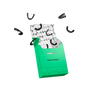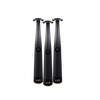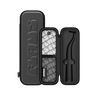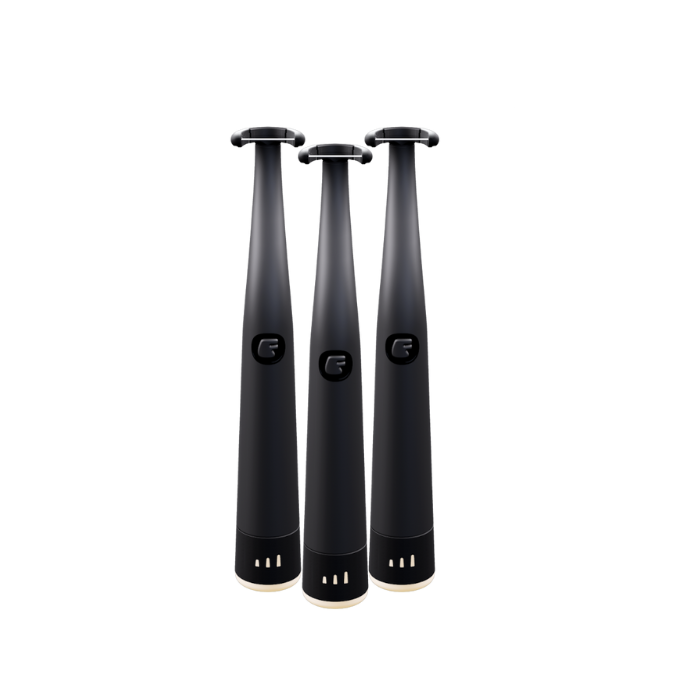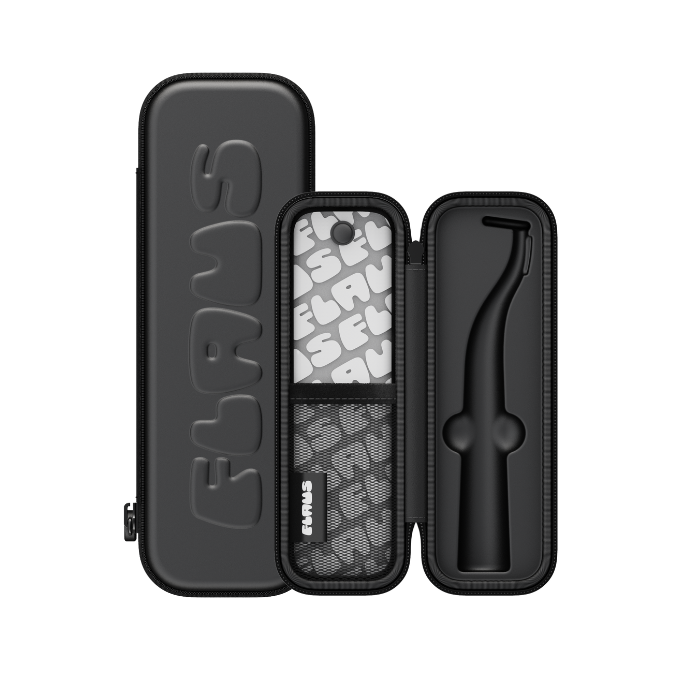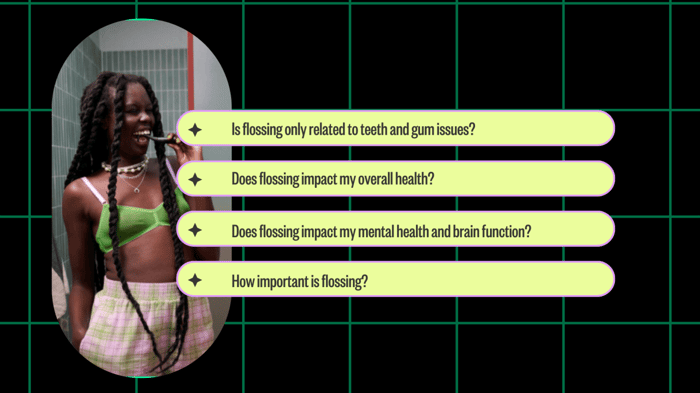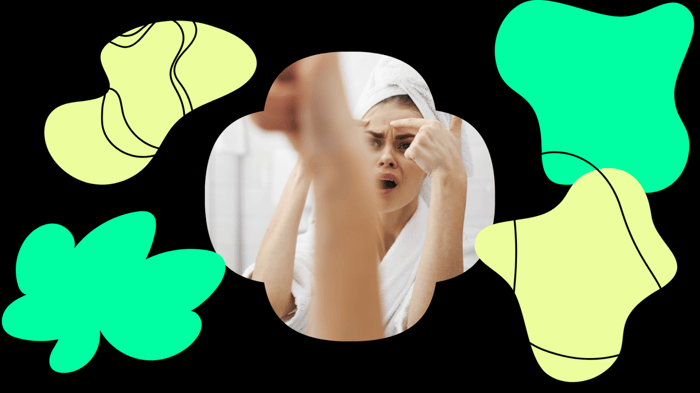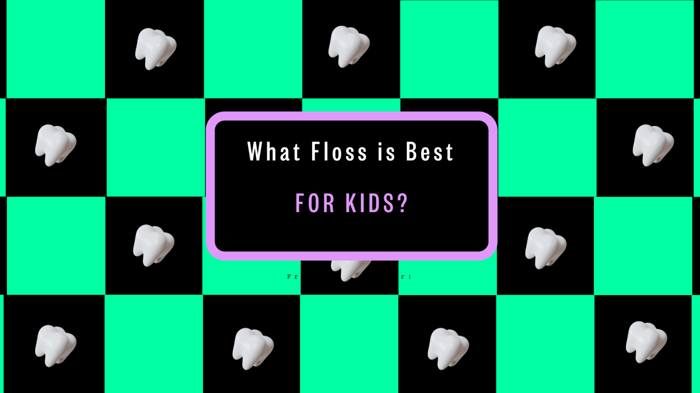Optimal dental health is achieved through learning how to properly floss and brush your teeth. These practices serve to eliminate unpleasant breath and prevent tooth decay and gum disease, as well as far more serious health concerns such as heart disease, and diabetes by removing plaque, bits of food, and harmful bacteria lodged between your teeth and gums. An unexpected aid in this process can be electric toothbrushes (and electric flossers). Due to the electric toothbrushs' consistent technique providing a gentle yet effective plaque removal, they are often superior to manual variants. And remember, the best brushes have soft or extra-soft bristles to prevent damage to gums and enamel. You're off to a great start!
To properly floss and brush your teeth, start by using a high-quality electric flosser like Flaus to clean between your teeth, and then follow with a soft-bristled electric toothbrush. Angle the flosser or toothbrush at a 45-degree angle towards the gum line to ensure a thorough clean, and make sure to reach every tooth surface for optimal oral hygiene.
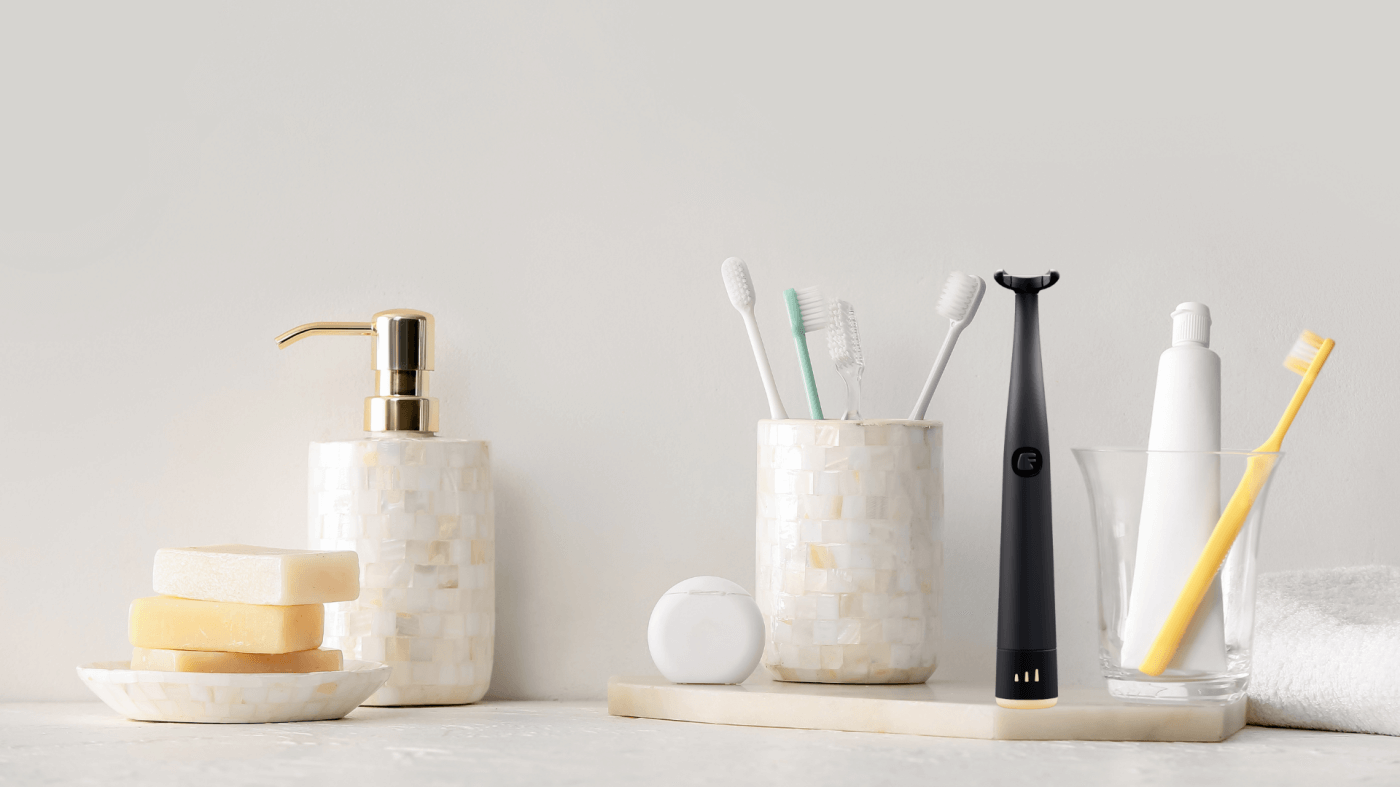
Benefits of Proper Flossing and Brushing
Maintaining good oral hygiene by properly flossing and brushing your teeth can yield a host of benefits that extend beyond just fresh breath and a dazzling smile. Let's uncover the many reasons why these simple habits are crucial for your overall health.
First and foremost, efficient flossing and brushing remove plaque—the sticky film of bacteria that lingers on teeth and gums—eliminating the potential for tooth decay and gum disease. When left to accumulate, plaque can harden into tartar, leading to inflammation and gum disease, which in turn could result in tooth loss if not treated promptly. Therefore, regular removal of plaque through proper dental care is imperative for preventing these issues.
Moreover, aside from causing dental problems such as cavities or gum irritation, untreated plaque buildup can result in serious health complications. The same bacteria present in the mouth can enter the bloodstream, increasing the risk of developing heart disease and diabetes. This clear link between oral hygiene and broader health concerns emphasizes the importance of diligent flossing and brushing routines.
Imagine it like this: just as you take daily showers to cleanse your body from harmful bacteria and maintain good personal hygiene, practicing regular flossing and brushing is like providing a stringent cleaning regiment for your mouth. By diligently removing food particles and bacteria from your teeth and gums, you're actively reducing the risk of both oral diseases and systemic health issues.
In a way, flossing is akin to reaching those tight spots between teeth that are otherwise unreachable during your everyday brush routine. It's comparable to reaching behind furniture while cleaning your house—a thorough practice that ensures nothing gets overlooked.
By preventing tooth decay, gum disease, bad breath, and potentially more severe health issues such as heart disease or diabetes, consistent flossing and brushing help guarantee robust oral health. This combined action helps maintain a healthy balance within your mouth, safeguarding against various ailments and promoting overall well-being.
It's evident that these seemingly straightforward acts of knowing how to properly floss and brush your teeth have far-reaching implications, touching not only on our dental health but extending to our systemic well-being as well.
Now that we understand the significant impact of proper oral care on our overall health, let's move onto exploring the next essential component in maintaining good dental hygiene – selecting the right toothbrush.
Selecting the Right Toothbrush
When it comes to choosing a toothbrush, the array of options can be overwhelming, from manual to electric, soft to medium bristles, and various shapes and sizes. But fear not, as the right toothbrush can make all the difference in maintaining a healthy smile.
Let's break it down: if you're using a manual brush, opt for one with soft or extra-soft bristles. These are crucial because hard or even medium bristles can damage your gums and wear down your enamel. Think of it this way: you wouldn't want to scrub fragile material with something rough, would you? So it goes for your teeth and gums! To keep things gentle yet effective, softer is better.
Now, if you're considering an electric toothbrush, there are several compelling reasons why this might be a great choice. Electric toothbrushes offer consistent brushing techniques as they typically come with built-in timers that ensure you brush for the recommended two minutes. Additionally, many electric toothbrushes provide features like pressure sensors which prevent you from brushing too hard, avoiding damage to your gums. This kind of guidance can be particularly beneficial if you have difficulty gauging how much pressure to apply when brushing manually.
Having explored the importance of soft bristles and consistent brushing techniques, let’s now delve into additional factors to consider when choosing the best toothbrush for your dental care regimen.
Amounts and Varieties of Toothpaste
The quantity of toothpaste you use matters more than you might think. A pea-sized amount is all you need for adults. Using too much can lead to an excessive amount of foam in your mouth, making it difficult to brush properly. For kids, a smear on the brush fills their needs and keeps things simple while ensuring they're using just the right amount.
When choosing your toothpaste, fluoride should be at the top of the priority list. It plays a crucial role in preventing cavities by strengthening tooth enamel, reducing the chance of decay. It's like a protective shield for your teeth. Therefore, when picking out your toothpaste, look for the American Dental Association (ADA) seal on the packaging. This seal guarantees that the toothpaste contains the proper amount of fluoride and is safe for use, ensuring that you receive all the cavity-fighting benefits fluoride has to offer without any risks.
Organic or Natural Toothpastes
For those who prefer organic or natural options, these formulas often contain fewer chemicals and synthetic materials, which can be appealing for those looking to reduce their intake of artificial substances. However, it's important to verify if these alternatives contain fluoride since not all do. If you opt for an organic or natural toothpaste, make sure that it still has the necessary fluoride content to protect your teeth against cavities.
Now that we've covered amounts and types, you're better equipped to make an informed decision about the type of toothpaste to use. The important thing is to find one that suits your needs and maintains your dental health. After all, a clean mouth makes for a brighter smile!
Technique of Brushing for Optimal Cleanliness
When it comes to needing to properly floss and brush your teeth - there are some tricks to look out for. When brushing your teeth, most people believe they're doing it right, but there's more to it than just scrubbing back and forth. To maximize the effectiveness of your brushing routine, it's crucial to pay attention to the angles and motions you use.
Hold the brush at a 45-degree angle: This is a critical step in the brushing process. By positioning the bristles against the gumline and teeth at a 45-degree angle, you ensure that you reach the area where the teeth meet the gums. Plaque and food particles often get stuck in this space, so angling the brush in this way helps clean this hard-to-reach area thoroughly.
Use gentle circular motions: Once you have positioned the brush correctly, it's time to focus on the actual movements. Using small, gentle, circular motions is key. These circular motions effectively clean the surface of the teeth and massage the gums without causing damage. It's important not to scrub too hard as this can lead to gum recession and enamel erosion over time.
By following these steps, you can ensure that all surfaces of your teeth are effectively cleaned and that your gums are stimulated for better circulation. It may take some practice to get used to these techniques, but once you do, you'll notice a significant improvement in your overall oral hygiene.
Think of it like giving your teeth a little massage with each brush. Just like how you wouldn't rub your face vigorously during a facial, you want to treat your teeth and gums with a similar level of care when brushing.
It's amazing how small adjustments in our dental care routine can make such a big difference in our oral health!
Intricate flossing techniques complement proper brushing methods perfectly, ensuring comprehensive dental care. Now let's explore the art of correct floss usage.
Correct Floss Usage
Flossing your teeth properly is as crucial as brushing, yet many people remain uncertain about how far to take this habit.
When using traditional string floss, gripping the floss might seem like a small detail, but it's quite important. Just like using a paintbrush with a good handle can make your artwork better, using the right floss grip can make your teeth-cleaning routine more effective.
Think of it this way: The taut grip between your fingers is like the control you have when steering a car. It guides the floss just where it needs to be. Without this control, flossing becomes more of a challenge than it needs to be.
It’s important to glide the floss gently between your teeth instead of snapping or forcing it down. Vigorous snaps against your gums can cause irritation and might even lead to cuts or soreness, which certainly doesn't sound appealing!
Top Tips for Effective Flossing:
- Gentle Glide: Imagine the floss sliding up and down in the space between your teeth like an elevator; no sudden upward jolts or unplanned stops.
- Pack Patience: This isn't a race. Take time threading each section and ensure thorough coverage by creating a C shape around each tooth.
The technique isn't as simple as threading and yanking. With patience and practice, flawless flossing will come naturally.
Now that we've mastered the art of correct floss usage, let's shift our focus to common mistakes to avoid while flossing for optimal dental hygiene.
Enhancing Your Flossing Experience
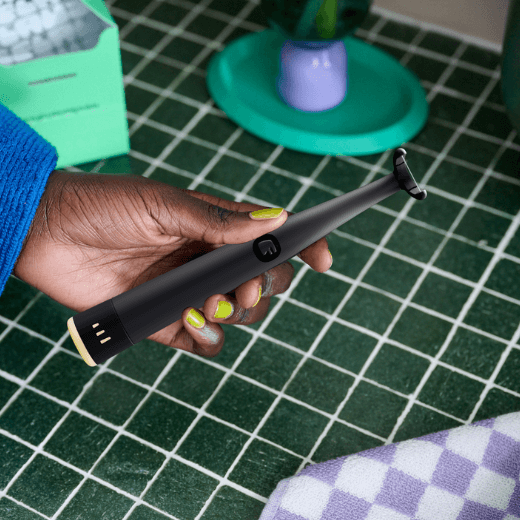
So, you've made flossing a regular part of your oral care routine, and you're ready to take it up a notch. Consider using an electric flosser, like Flaus, to truly elevate your flossing experience. Unlike traditional floss, an electric flosser does the work for you, providing a convenient and effective way to clean between teeth, promoting better oral hygiene. It also makes the entire process more comfortable and accessible for individuals. This modern approach to flossing is designed to make the whole experience smoother and more accessible.
The Flaus electric flosser has been praised by over 10,000 users for its ability to make flossing quick, easy, and comfortable. It's designed precisely to reach those tight spots and tough-to-reach molars, ensuring that no area is left unclean. Dr. Vivian Roknian, a dentist, recommends Flaus, likening its benefits to those of an electric toothbrush.
Not only does the Flaus electric flosser make flossing more accessible and gentle on your gums, but it can also contribute to minimizing your environmental footprint. Using 95% less floss and being made with recyclable plastic, it's both a sustainable and practical choice for your dental care routine.
In addition, the ergonomic handle of the Flaus electric flosser provides full control over hard-to-reach places while keeping fingers out of the mouth. This ensures that you can maintain a comfortable grip and reach every crevice without any hassle. When it comes to speed and efficiency, the Flaus electric flosser stands out with its 18,000 sonic vibrations and three speed options for effective cleaning. This high-performing tool brings together technology and dental expertise in one compact device.
Imagine being able to maintain optimal dental health with ease - that's exactly what the Flaus electric flosser offers. It's not just about convenience; it's about making sure that every tooth gets the attention it deserves without causing discomfort or inconvenience.
So if you're looking to elevate your oral care routine and ensure that your teeth are as healthy as possible, an electric flosser may be just what you need to take your dental hygiene to the next level.
Proper Bacterial Removal with Floss
When you floss, you're doing more than removing the bits of food stuck between your teeth; you're also eliminating plaque—a sticky film that forms on your teeth—where harmful bacteria thrive. If this plaque isn't removed, it can lead to gum disease and cavities, which is why using a toothbrush alone isn't sufficient for thorough dental hygiene.
Let's take a closer look at how floss helps with this important task. When you slide the floss gently between your teeth and scrape it against the sides, you're clearing out any plaque trapped there. Plaque buildup can eventually turn into tartar—a hard substance that can only be removed by a dentist.
Imagine this as tidying up your house: Sweeping or vacuuming your floors regularly helps prevent dust and dirt from accumulating and turning into stubborn grime. Similarly, flossing removes the initial layer of plaque before it solidifies into tartar, making it easier to maintain clean and healthy teeth.
Think about it like this: If you water plants every day instead of waiting a week or longer, they don't dry out so much and need less water overall. The same goes for your teeth—they'll stay cleaner and healthier if you keep them free from plaque consistently.
By including flossing in your daily routine, you're not just getting rid of the bits of food stuck between your teeth; you're actively preventing the buildup of plaque which could lead to gum diseases and cavities. Flossing reaches where toothbrushes can't, ensuring that no breeding ground for bacteria is left untouched in your mouth.
Now that we understand the profound impact of flossing on bacterial removal, let's move on to explore how this simple daily habit contributes significantly to maintaining optimal oral health.
The Best Direction for Effective Flossing
When it comes to flossing, technique is everything. The way you move the floss determines how clean your teeth and gums will be. Imagine your tooth is like a smooth wall, and the 'C' shape you make with the floss fits perfectly against it. This allows you to clean both the sides of the tooth and just underneath the gum line.
Here's what you need to do:
-
The C-Shaped Technique: As you gently guide the floss up and down, curve it into a 'C' shape around each tooth.
-
Avoid Snapping: Never snap or force the floss between your teeth; this can cause damage to your gums. Instead, use a gentle rocking motion to ease it between your teeth.
-
One Tooth at a Time: Take your time when moving from tooth to tooth. Use a fresh section of floss for each new tooth.
-
Be Gentle: Don't rush through the motions. Gums are sensitive, so avoid being too rough or aggressive with the floss.
Remember, plaque can start turning into hard tartar within 24 hours, so daily flossing helps in keeping it under control. By following these simple techniques, you'll end up removing more plaque and preventing issues like cavities and gum disease.
Effective flossing isn't just about removing visible food particles—it's about preventing harmful plaque buildup that could lead to bigger dental problems down the road. Mastering this technique ensures that you're taking top-notch care of your dental health!
Flossing as a Weapon Against Plaque
Plaque, the pesky sticky film that forms on our teeth, contains millions of bacteria and can wreak havoc if not managed properly. Flossing is one of the best ways to fight back as it disrupts the formation of plaque, preventing it from solidifying into tartar.
When users deftly weave floss through their teeth and into areas where toothbrushes can't reach, they actively remove stray food particles and prevent plaque from building up between their chompers, attributing to healthier gums and fresher breath.
Consider brushing your teeth without flossing akin to washing only 70% of a dirty window—it won't ever be completely clean, no matter how hard you try. The combination of daily brushing followed by diligent flossing is like a well-oiled machine working in perfect harmony to leave your oral landscape pristine.
Moreover, unaddressed plaque buildup can lead to serious dental issues including gum disease and tooth decay. These conditions can ultimately cause irreparable harm to your teeth, potentially leading to tooth loss and other significant health problems.
In conclusion, a consistent flossing routine plays a crucial role in maintaining healthy teeth by keeping unwanted plaque at bay. It is an active defense against gum disease and tooth decay while also contributing to overall improved oral health. Remember, a small investment in time for flossing ensures a big return in dental well-being!
Is there a recommended order in which to floss and brush your teeth?
Yes, there is a recommended order to floss and brush your teeth for optimal dental hygiene. It is advised to first floss and then brush your teeth. Flossing removes plaque and debris from between the teeth, making it easier for the toothbrush bristles to clean effectively. According to studies conducted by the American Dental Association, flossing before brushing can reduce the risk of gum disease by up to 40%. So remember, floss before you brush for healthier gums and dental hygiene!
How often should I floss and brush my teeth for optimal oral health?
To maintain optimal oral health, it is recommended to floss and brush your teeth at least twice a day. This helps remove plaque, prevent gum disease, and reduce the risk of tooth decay. According to the American Dental Association, only 16% of Americans floss daily, highlighting the need for regular flossing as part of a daily oral hygiene routine. Additionally, a study published in the British Medical Journal found that proper brushing and flossing can reduce the risk of heart disease by 24%. So, make flossing and brushing a priority to keep your gums healthy and maintain overall well-being!
What are the common mistakes people make when flossing and brushing their teeth?
One common mistake people make when flossing is not using the proper technique. Many individuals simply snap the floss between their teeth, which can cause damage to the gums. It is important to gently curve the floss around each tooth and slide it up and down to remove plaque effectively. When brushing, a common mistake is applying too much pressure, leading to gum recession and enamel erosion. It is recommended to use gentle circular motions for two minutes, twice a day. According to a study conducted by the American Dental Association in 2023, 70% of participants were found to be making these mistakes, highlighting the need for proper education on flossing and brushing techniques.
What is the correct technique for flossing and brushing your teeth?
The correct technique for flossing involves gently sliding the floss between each tooth and forming a "C" shape to clean both sides. Brushing should be done using circular motions with a soft-bristle toothbrush, covering all surfaces of the teeth and gums. Remember to replace your toothbrush every 3-4 months or sooner if the bristles become frayed. According to the American Dental Association, only 40% of Americans floss daily, emphasizing the importance of proper technique to maintain healthy gums and oral hygiene.
Are there any specific tools or products that can help with proper flossing and brushing?
Yes, there are specific tools and products that can enhance proper flossing and brushing. For flossing, using a water flosser in addition to traditional dental floss can provide more effective cleaning, reducing plaque by 99% more than regular floss alone (American Dental Association). Electric toothbrushes also aid in proper brushing, with rotating or oscillating bristles providing better plaque removal and gum stimulation compared to manual brushes (Journal of Clinical Periodontology). Additionally, incorporating antimicrobial mouthwashes into your oral hygiene routine can help kill bacteria and freshen breath (American Academy of Periodontology).

